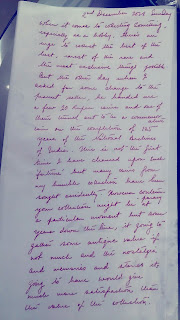The Coin Speaks - Numismatic Heritage of India.
When I was in the midst of my coin collection hobby, I stumbled upon an old coin from the era of the British Raj. The almost worn out coin had 1/12 ANNA written on it as its denomination. I was quite aware about the ANNA as a denomination/value in the old monetary system. But what had the 1/12 to do as a value ? What was its value in the current monetary system ?
Upon researching and asking people around and reading stuff on coinage in India, I got to know quite a lot which I thought should be shared with others.
India's Numismatic legacy goes back to the ancient period of the Janapada-Mahajanapada Era (12th - 6th Century B.C.) when the first punchmarked coins were used. From then onwards it became a prominent medium of exchange and economic value. In the medieval period Sultan Sher Shah Suri introduced a monetary reform in which he introduced 3 denominations v.i.z. DAM (Copper), RUPEE/RUPAIYAH (Silver) and ASHRAFI/MOHUR (Gold). He is credited for the FRACTIONAL SYSTEM that he brought in use where, say, denominations are divided into SUB-DENOMINATIONS.
A system similar to this , rather based on this continued till the time the Independent, Republic of India changed to the DECIMAL SYSTEM.
When the British East India Company got a strong hold over Indian Politics, they did introduce coinage in the company's name. During that period i.e. 18th - 19th century, the many Princely States in India also continued issuing their own currency.
After the Revolt of 1857, the transfer of power from the British E.I.C. to the British Crown took place and the REGAL ISSUES were introduced from 1862 to 1947. The Obverse had denominations in full or fractions and the reverse had a bust of the then ruling British Monarch. Till 1950, when the Republic of India changed to Decimal system, the fractional system was in use. It was an extremely complex system where one had to be good in maths to understand the transactions. With things made far simpler in the later years , this fractional system seems very confusing.
Regal issues in the name of the British Crown.
When the decimal system was introduced, it was called as the NAYE PAISE issues meaning NEW PAISE coins. And then years later when the decimal system got rooted firmly , it changed to simply paise issues.
With India on the path of development and modernization and with overall progress in other fields, it got reflected on the coins of various denominations in the form of images on the reverse of the coins.
Post-Independence issues.
The journey of coinage and its development in just the Pre-British, Post-Bristish till current times is so intriguing, let alone the whole of India through its ages.
Stay tuned for more on Indian Coinage.
#commemoration #coins #coincollecting #coincollection #coincollector #coinpower #numismatic #numismatics #numismatica #numismaticahobby #coincollectionhobby #hobby #india #indiancoin #5rupees #worldofcoins #coinlover #coinlovers #coincollectorsofinstagram #coincollectors #worldcoins #worldcoinjewelry #worldcoinsnotes #coinworld #historygeeks #historylovers #history #preindependence #indian #incredibleindia #historyfreaks #legacy #legacies #memoirs #past #quarteranna #1938 #1/12anna #britishraj #britishrajcoins #britishindiacoins #indiancoins #oldcoins #vintagecoins #numismatica #numismatist #numismatic #numismatics #oldindiancoins #georgev #george5 #georgevi #george6 #kingemperor





Comments
Post a Comment